Overview
The article emphasizes the critical role of land document imaging in enhancing the efficiency of title research through various technological advancements. It asserts that imaging technology not only streamlines workflows but also improves accuracy in document verification and significantly reduces processing times. Consequently, this enables real estate professionals to operate more effectively, while mitigating risks associated with document management.
Introduction
Land document imaging is revolutionizing title research, providing unparalleled efficiency and accuracy in a field that demands precision. By leveraging advanced imaging technology, professionals can optimize their workflows, lower costs, and improve collaboration, ultimately facilitating faster and more dependable property transactions. As the industry progresses, the question remains: how can real estate experts seamlessly integrate these cutting-edge solutions to maintain competitiveness and protect sensitive information?
Parse AI: Streamline Title Research with Automated Document Processing
employs and optical character recognition (OCR) to automate the extraction of critical information from . This innovative approach drastically reduces the time spent on , enabling researchers to concentrate on more intricate tasks that necessitate human insight. By digitizing extensive collections of , Parse AI not only streamlines access to vital data but also significantly .
Furthermore, real estate experts have noted , with specific data from external sources indicating that by as much as 85%. Case studies reveal that companies utilizing Parse AI have experienced a remarkable increase in productivity; for instance, one logistics firm reduced its processing time per file from over seven minutes to under thirty seconds. Such advancements underscore the crucial role of in modern real estate operations, positioning Parse AI as an invaluable resource for professionals aiming to optimize their workflows.
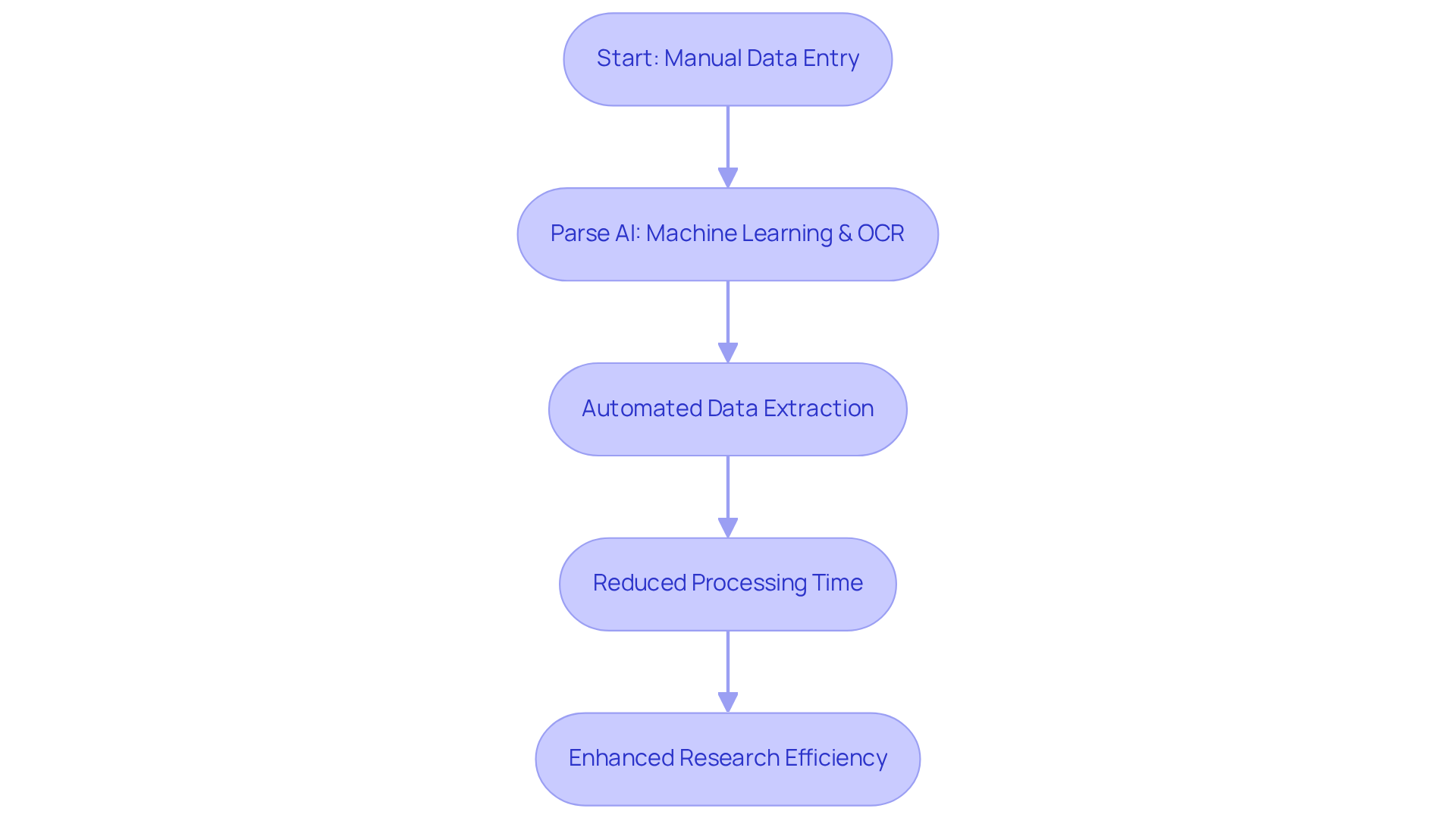
Enhanced Accuracy: Improve Property Title Verification with Imaging Technology
demonstrates how imaging technology is pivotal in of by offering clear, of documents. This clarity empowers researchers to and inconsistencies more effectively than traditional methods.
Recent studies reveal that 90% of research specialists experience fewer discrepancies when employing imaging technology, highlighting its role in . Furthermore, land document imaging explained by the use of high-resolution images has been linked to a reduction in , as experts can confirm the accuracy of the data they rely on, ensuring compliance with regulatory standards.
Legal specialists emphasize that is essential; even minor errors can lead to significant legal ramifications. As legal expert John Doe states, 'Mistakes in ownership inquiries can lead to .'
By adopting visualization technology, real estate professionals can significantly mitigate these risks, fostering a more reliable and .
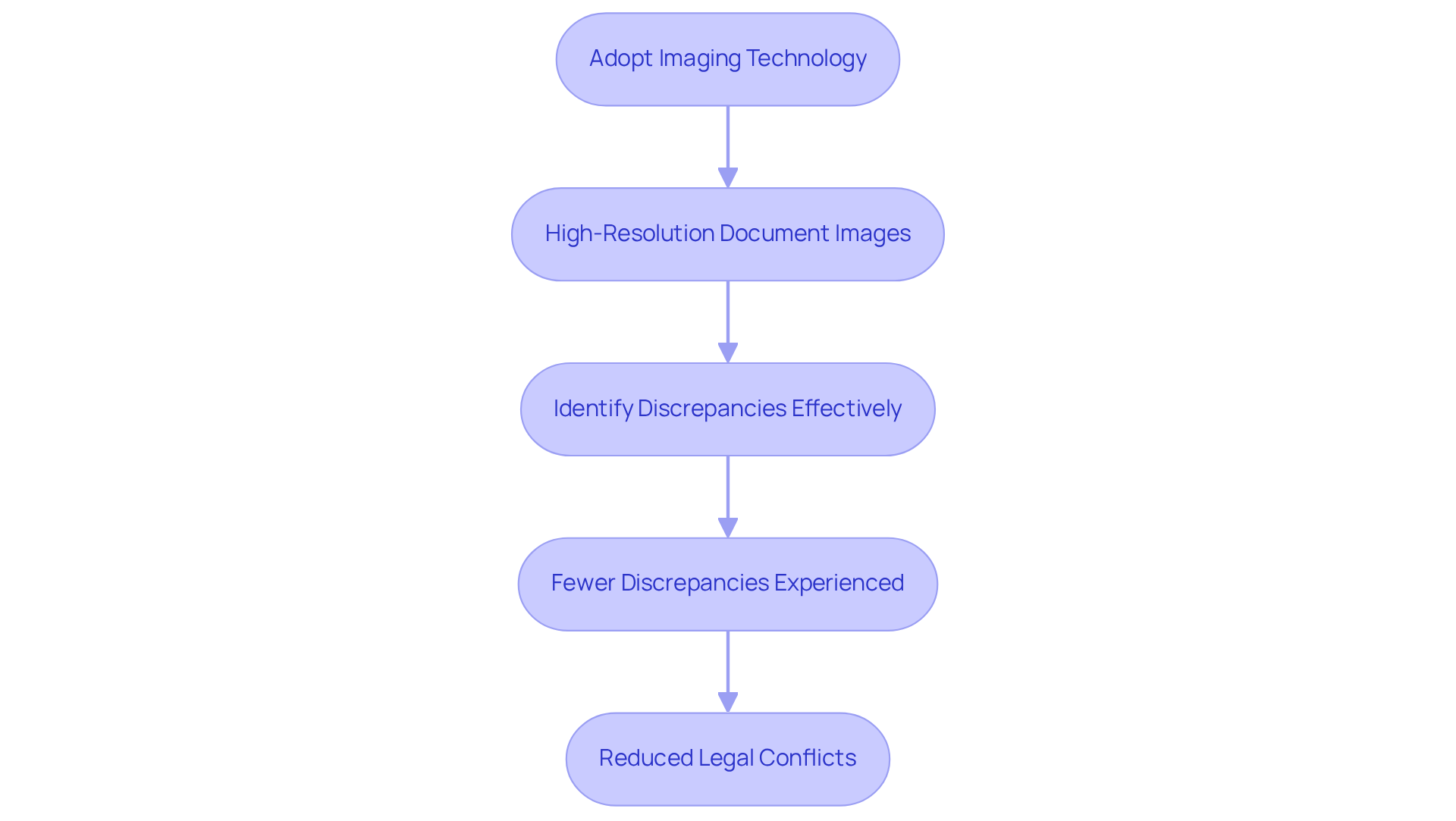
Time Efficiency: Accelerate Title Research Processes with Document Imaging
significantly accelerates document examination processes by providing rapid access to essential information. By swiftly reviewing and digitizing large volumes of files, title researchers can access and analyze data far more quickly, a process that is effectively illustrated by land document imaging explained compared to traditional methods. This not only expedites the investigative process but also enables professionals to manage , as land document imaging explained contributes to a notable increase in productivity.
Statistics reveal that:
- 85% of business decision-makers believe they must achieve substantial advancements in within 24 months to avoid falling behind competitors, underscoring the urgency of adopting .
- Case studies illustrate that organizations transitioning to paperless operations have realized , with one study indicating that companies eliminating paper-based processes can enhance both productivity and customer experiences.
As Marc Noviello, a Senior Digital Transformation Specialist at Docufree, asserts, 'One of the best ways of making data more effective is by eliminating paper-based processes.'
As we approach 2025, with projections suggesting that 175 trillion gigabytes of data will be generated, the demand for will only intensify, which is why land document imaging explained will become an indispensable resource for real estate professionals striving to maintain a competitive edge.
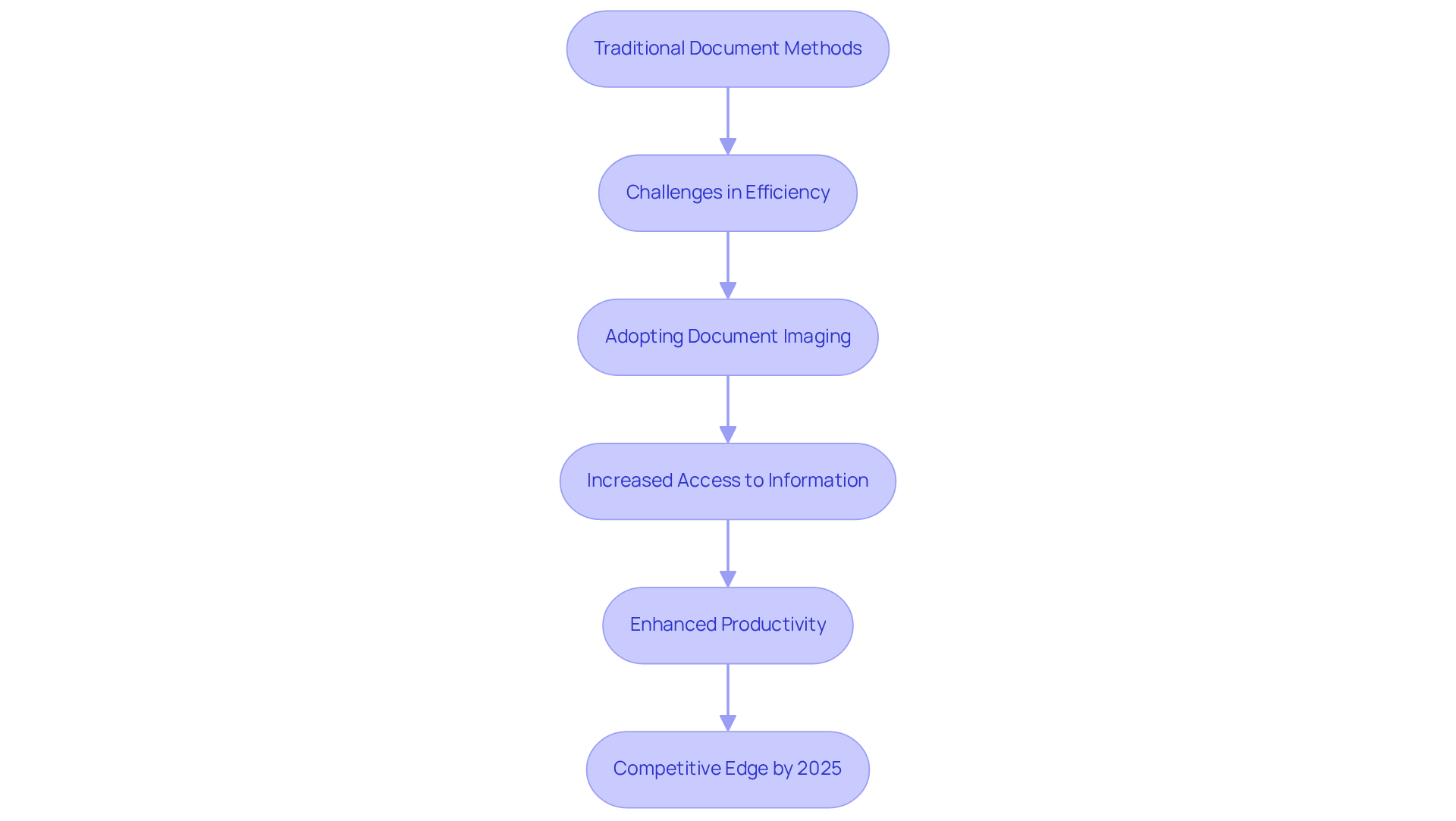
Cost Savings: Reduce Title Research Expenses through Imaging Solutions
Applying visual solutions in document analysis leads to . By minimizing the need for physical storage and cutting labor costs linked to manual data entry, real estate professionals can optimize resource allocation.
For example, businesses that save an average of 2,000 hours annually—equivalent to one full-time employee's workload—directly addressing the labor-intensive nature of title research.
Furthermore, visual technology accelerates turnaround times, enabling and enhancing profitability. In fact, 75% of companies utilizing automation report direct reductions in overtime labor costs, underscoring the financial advantages of adopting these technologies.
As the industry evolves, leveraging solutions such as not only streamlines operations but also positions firms for greater competitive success in 2025 and beyond. Notably, 88% of organizations cite improved efficiency and as key benefits of automation.
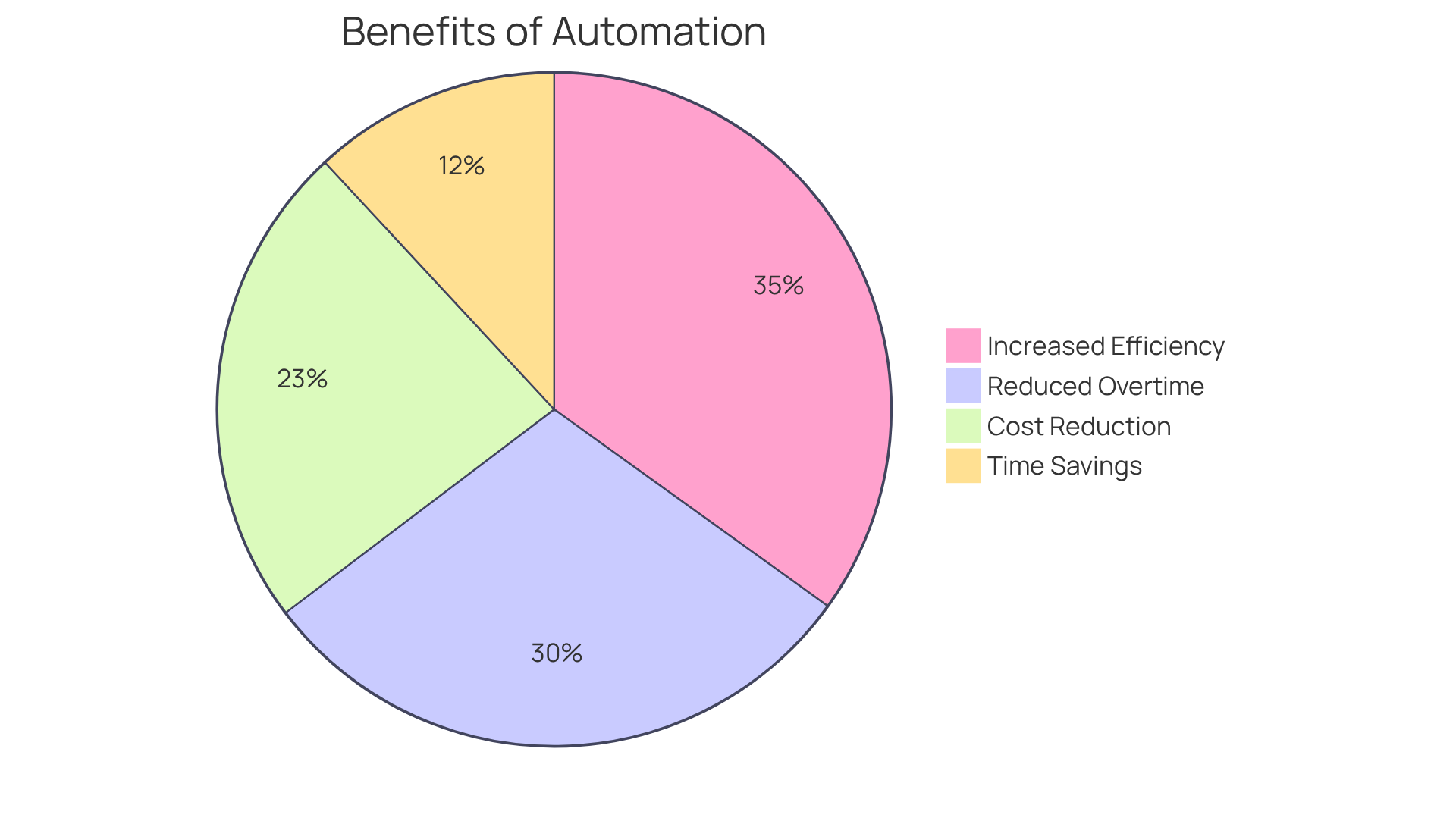
Document Management: Simplify Handling of Large Volumes with Imaging Technology
The management of extensive title collections is fundamentally transformed by imaging technology, as converts them into organized digital formats. This , retrieval, and sharing of files among team members, significantly .
Agencies employing advanced file management systems have reported , with studies indicating reductions of up to 50% in the time spent locating essential information. It is crucial to reference specific studies to substantiate this claim. By streamlining workflows, title researchers can ensure that , which is essential for land document imaging explained, ultimately improving decision-making processes.
The Agency for Toxic Substances and Disease Registry (ATSDR) exemplifies this achievement; since 1988, their visual system has markedly enhanced information retrieval efficiency, allowing prompt access to essential data for public health responses. The ATSDR has reviewed and archived over 342,118 pages of records, underscoring the effectiveness of their visualization system.
As Sharon O. Jacobs, Director of the Office of Information Resources Management, articulates, the mission of the ATSDR is to 'prevent or lessen harmful effects to people and their quality of life caused by hazardous materials in or near their communities.' This statement underscores the vital role of in supporting public health initiatives.
As the sector advances towards 2025, explained technology into research workflows is not merely a trend; it is a necessity for maintaining a competitive edge, particularly in light of the importance of both temporary and long-term information preservation in digital record management.
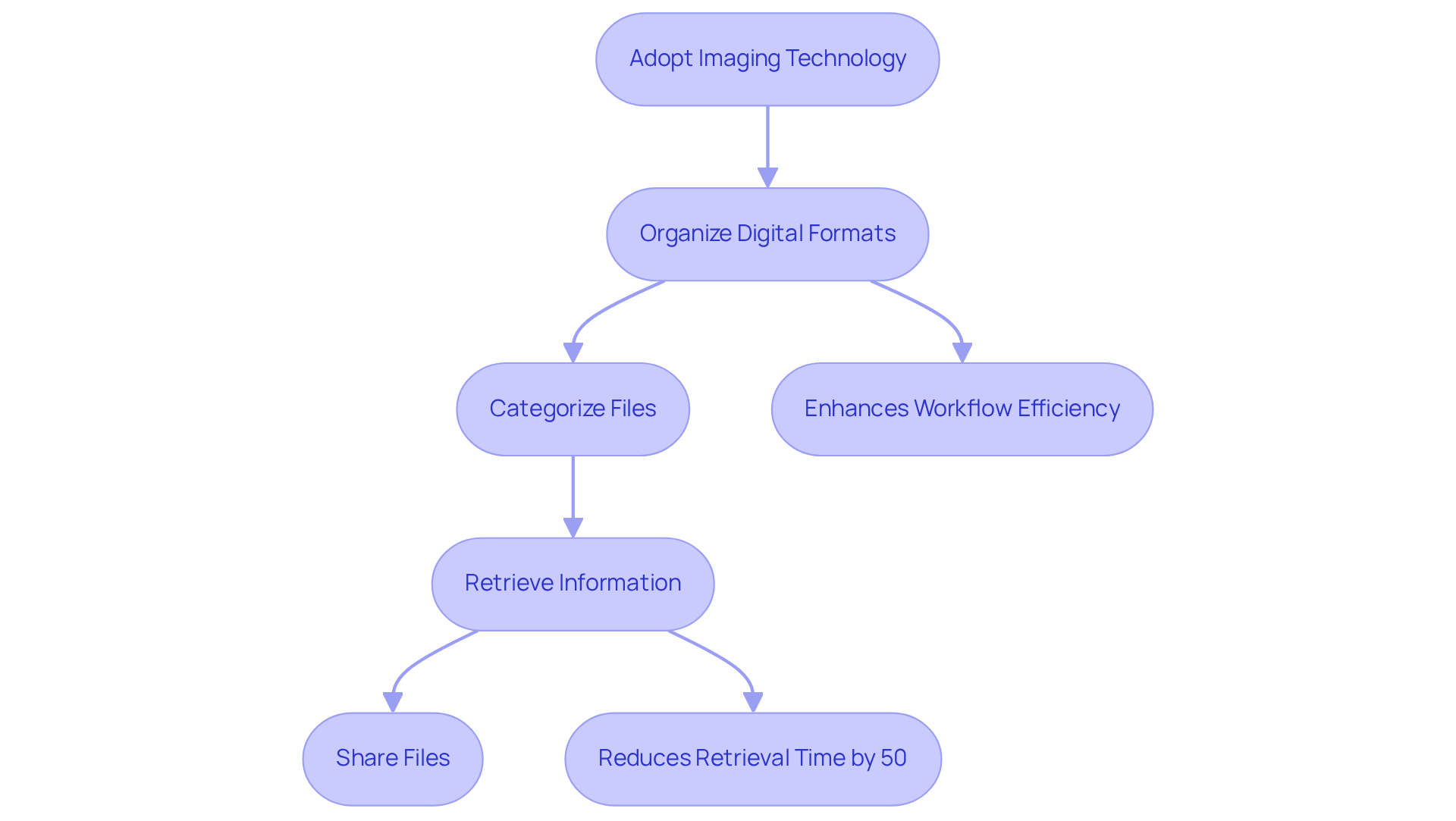
Improved Accessibility: Gain Quick Access to Title Information with Imaging
Imaging technology revolutionizes access to ownership information, empowering users to retrieve files from anywhere at any time. in reviewing and analyzing materials on-the-go, thereby significantly . This level of accessibility is invaluable in urgent situations, where can be crucial for efficiently closing deals.
An increasing number of real estate professionals are leveraging , with 83% of firms already utilizing such services specifically for property investigations. Case studies highlight that organizations employing these technologies have reported , with some experiencing retrieval time reductions of up to 50%.
As we approach 2025, the momentum toward cloud-based solutions for document analysis is expected to accelerate, further streamlining workflows and boosting overall efficiency in the sector. Notably, industry experts stress the importance of —critical factors in maintaining trust and compliance.
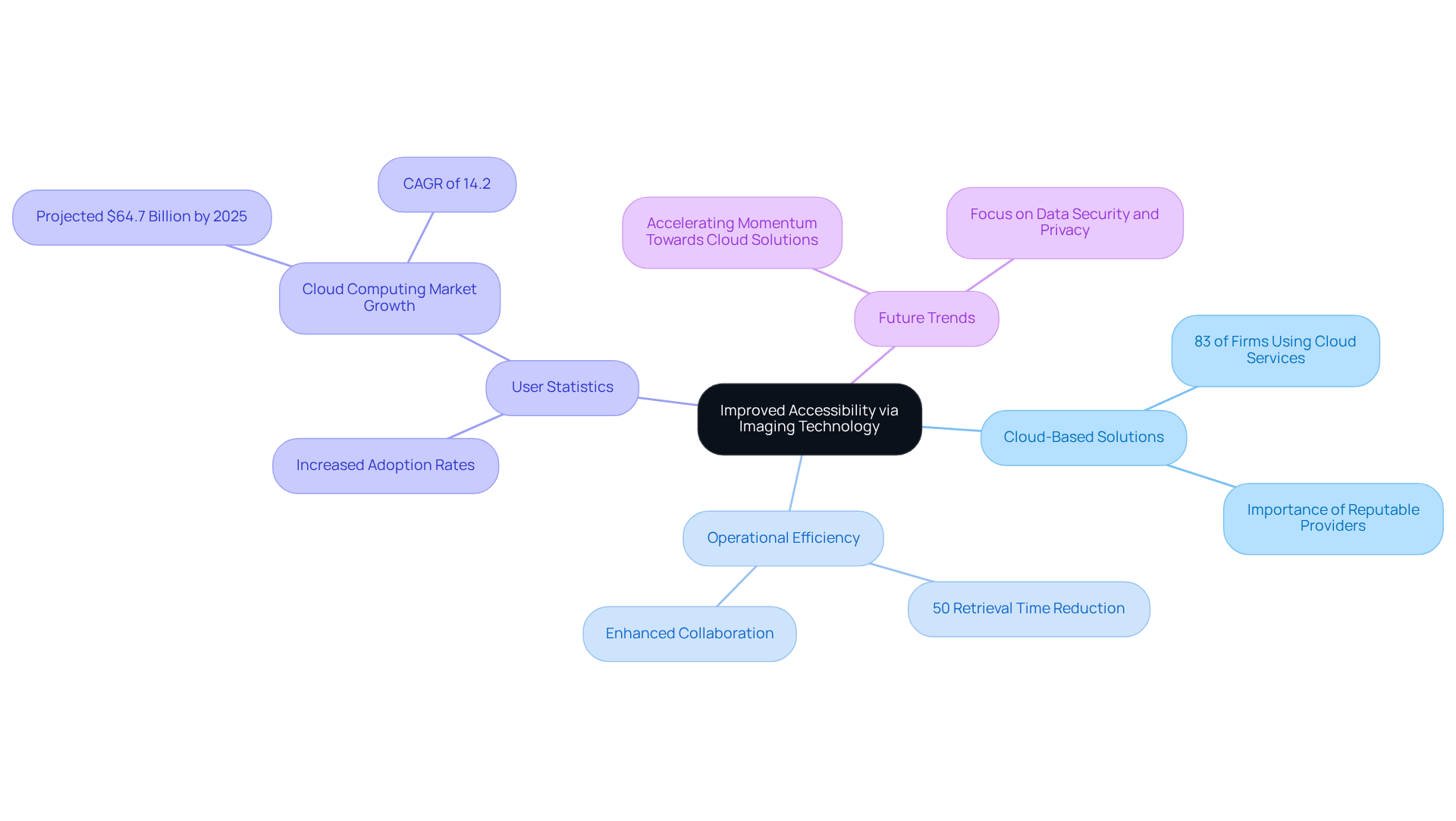
Collaboration Enhancement: Foster Teamwork with Shared Imaging Resources
Shared imaging resources significantly enhance collaboration among document teams by allowing multiple users to access and work on files simultaneously. This collaborative environment fosters , ensuring all team members stay aligned and informed. Consequently, the likelihood of errors diminishes, leading to .
For instance, firms implementing innovative strategies are experiencing delivery times reduced by as much as 30%, directly linked to error reduction in documentation examination. By leveraging these technologies, teams not only but also , ultimately resulting in superior outcomes in document analysis.
Effective leadership and a robust communication strategy are essential components for of , as highlighted in recent studies. Incorporating these elements can further enhance teamwork and collaboration within research teams.
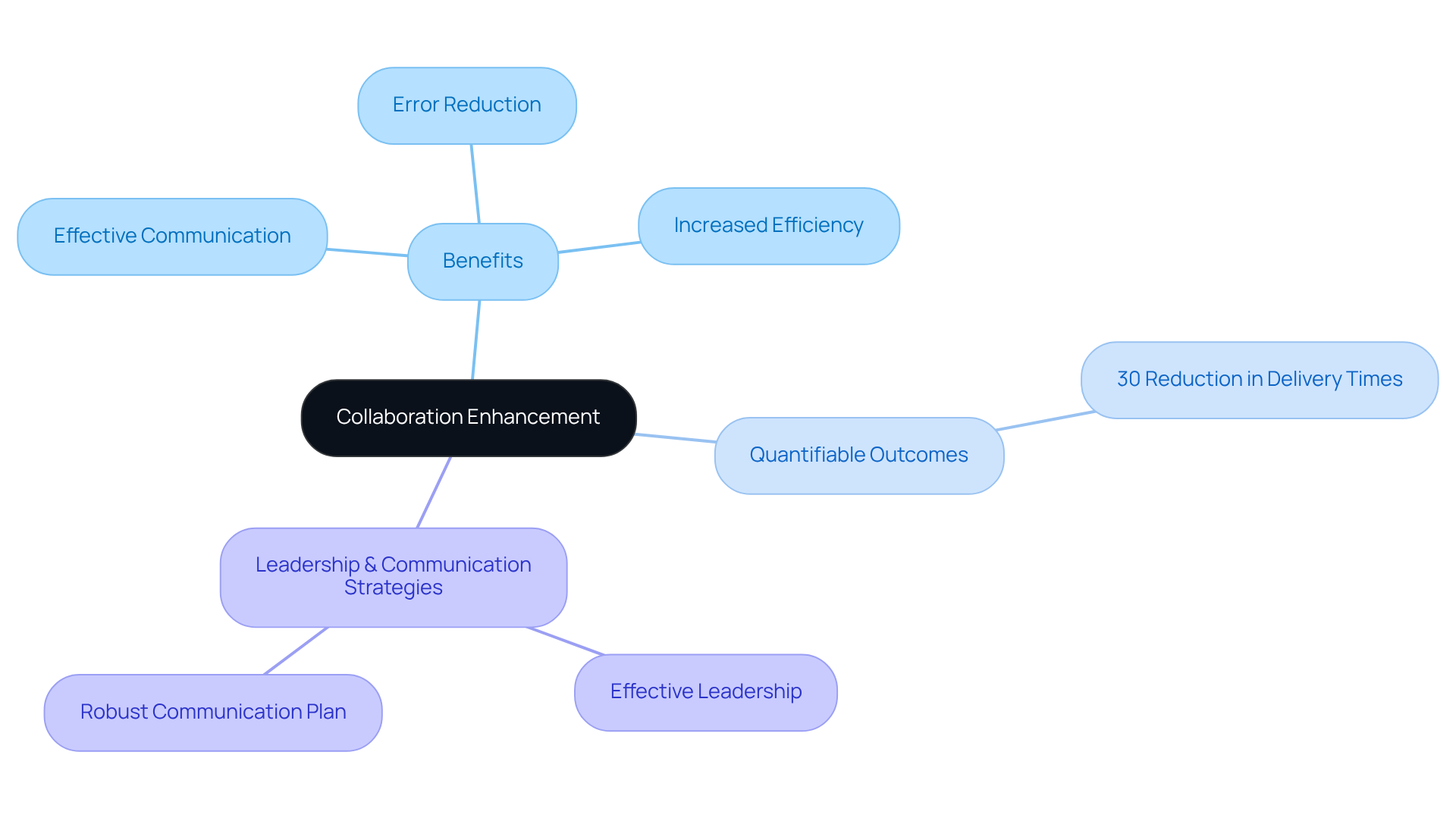
System Integration: Seamlessly Incorporate Imaging Technology into Existing Workflows
Incorporating is essential for maximizing its advantages and ensuring that . By aligning visual solutions with existing systems, teams can avoid disruptions and facilitate a smoother transition to digital processes. This seamless integration enables professionals to fully utilize the while maintaining efficiency.
Furthermore, organizations that have successfully adopted visual solutions report significant enhancements in , with some noting productivity maintenance during the transition phase. As one IT professional stated, 'Effective stakeholder communication at the beginning, including managing expectations about the software’s capabilities, is vital.'
This method not only improves operational efficiency but also , ultimately resulting in .
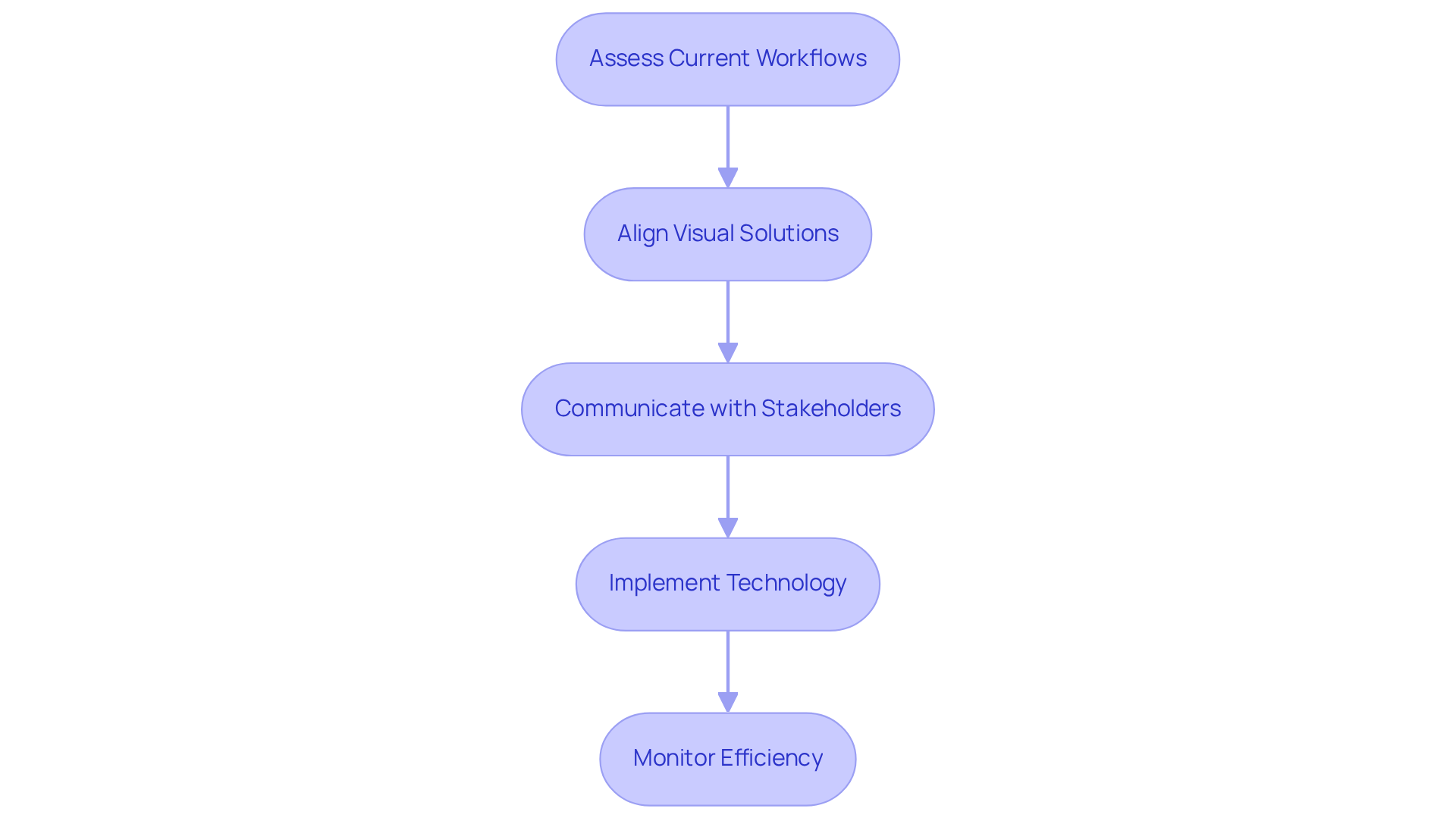
Data Security: Protect Sensitive Title Information with Imaging Solutions
Data protection is paramount in research, and visual solutions are crucial in . By employing and secure access protocols, researchers can effectively protect their files from unauthorized access and potential data breaches. Organizations that have adopted report a , with studies indicating that encryption can thwart up to 90% of unauthorized data access attempts.
Furthermore, enhances the security of ownership documents by ensuring that is maintained in a protected digital format. This not only preserves the integrity of ownership information but also fosters trust among clients and stakeholders. Cybersecurity specialists emphasize that the integration of encryption and visual technology is essential for in real estate transactions. As one specialist remarked, "The establishment of robust encryption protocols is essential for safeguarding sensitive data in today's digital environment."
Case studies further illustrate the efficacy of these solutions. For example, a leading document analysis firm reported that after incorporating visual technology alongside encryption, they experienced a 75% reduction in data breach incidents. This transformation not only secured sensitive document information but also streamlined their workflow, facilitating quicker access to secure files. As the industry continues to evolve, the concept of land document imaging explained through the combination of visual solutions and strong encryption will remain a critical component of effective document analysis, ensuring that confidential information is thoroughly protected.
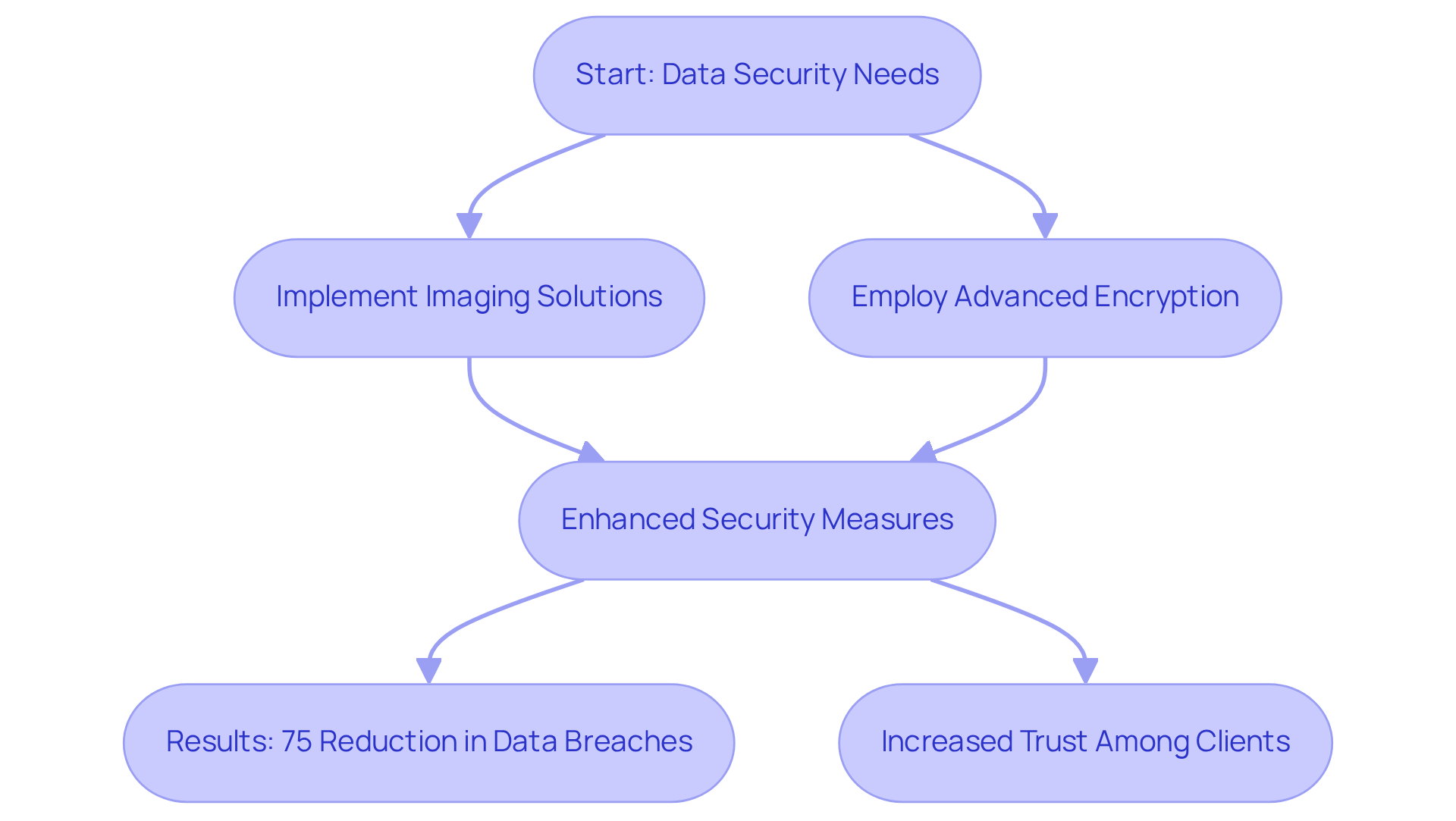
Future-Proofing: Stay Competitive in Real Estate with Advanced Imaging Technology
Adopting is crucial for updating property research methods and ensuring sustained competitiveness in the real estate industry. As the sector experiences swift change, utilizing enables title researchers to significantly enhance their efficiency and precision.
For instance, platforms can reduce , allowing professionals to deliver results more swiftly and with greater accuracy. Furthermore, case studies reveal that firms embracing these technologies have witnessed a marked increase in productivity and client satisfaction, reinforcing the necessity of staying ahead in a competitive market.
Industry analysts emphasize that the is not merely a trend but a critical evolution in real estate technology, positioning firms to thrive in 2025 and beyond. By prioritizing these advancements, title researchers can bolster their operational effectiveness and maintain relevance in an increasingly dynamic landscape.
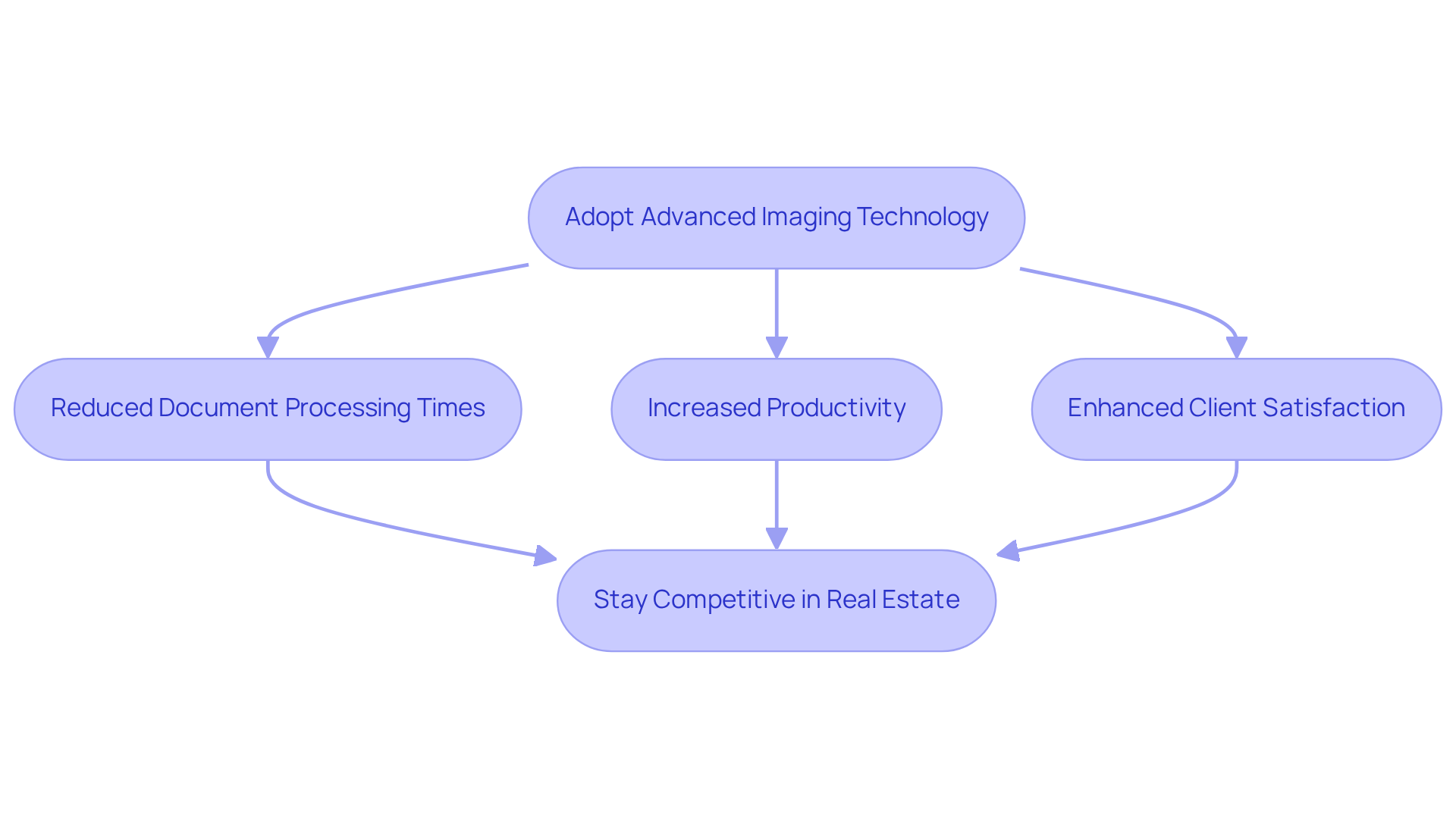
Conclusion
The integration of land document imaging into title research processes is transforming the real estate landscape by significantly enhancing efficiency, accuracy, and accessibility. By leveraging advanced imaging technology, professionals can streamline workflows, reduce processing times, and improve the overall quality of property title verification. This shift not only empowers researchers to focus on more complex tasks but also positions them to meet the increasing demands of a fast-paced industry.
Key points highlighted throughout the article include:
- The automation of document processing through tools like Parse AI
- The enhancement of accuracy via high-resolution imaging
- The time and cost savings achieved by transitioning to digital formats
Furthermore, the importance of data security and system integration has been emphasized as essential components for maintaining trust and optimizing operations in real estate. Each of these elements plays a crucial role in ensuring that professionals remain competitive and effective in their roles.
As the real estate sector continues to evolve, embracing land document imaging is not merely advantageous—it is essential for future success. By adopting these technologies, firms can enhance collaboration, improve decision-making, and safeguard sensitive information, ultimately leading to better outcomes for clients and stakeholders alike. The call to action is clear: prioritize the integration of imaging solutions to not only keep pace with industry changes but to thrive in an increasingly digital and data-driven world.
Frequently Asked Questions
What is Parse AI and how does it improve title research?
Parse AI employs advanced machine learning algorithms and optical character recognition (OCR) to automate the extraction of critical information from property records, drastically reducing the time spent on manual data entry and allowing researchers to focus on more intricate tasks.
How much time can automation reduce in title research processes?
Automation can decrease processing time by as much as 85%, significantly enhancing workflow efficiency for real estate professionals.
Can you provide an example of productivity improvement using Parse AI?
One logistics firm reduced its processing time per file from over seven minutes to under thirty seconds after utilizing Parse AI, showcasing a remarkable increase in productivity.
What role does imaging technology play in property document verification?
Imaging technology provides clear, high-resolution images of documents, which enhances accuracy in identifying discrepancies and inconsistencies during property document verification.
How does imaging technology impact the frequency of discrepancies in research?
Recent studies indicate that 90% of research specialists experience fewer discrepancies when using imaging technology, streamlining the verification process.
What are the potential legal implications of inaccuracies in ownership investigations?
Minor errors in ownership inquiries can lead to significant legal ramifications, including expensive lawsuits and erosion of confidence, highlighting the importance of precision in these investigations.
How does land document imaging accelerate title research processes?
Land document imaging allows for rapid access to essential information by swiftly reviewing and digitizing large volumes of files, significantly expediting the investigative process.
What are the benefits of transitioning to paperless operations in title research?
Organizations that transition to paperless operations can realize considerable efficiency gains, enhancing both productivity and customer experiences.
What is the urgency for businesses to adopt digital transformation technologies?
85% of business decision-makers believe they must achieve substantial advancements in digital transformation within 24 months to avoid falling behind competitors, emphasizing the need for record-capturing technologies.
Why will land document imaging become essential for real estate professionals by 2025?
With projections suggesting that 175 trillion gigabytes of data will be generated by 2025, the demand for quick access to information in property studies will intensify, making land document imaging an indispensable resource for maintaining a competitive edge.




